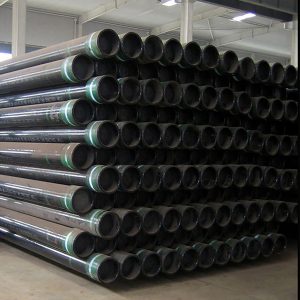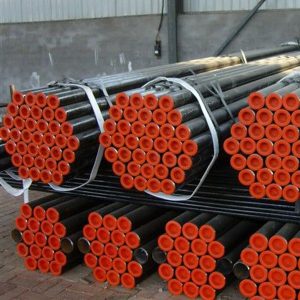Appendix B gives the dimensions and mechanical properties for standard API drill pipe. This is the drill pipe used in most rotary drilling operations (shallow and deep). API drill pipe are fabricated by various API certified manufacturers around the world, principally for use in the drilling of deep wells for the recovery of oil and natural gas. Table B-3 gives the drill pipe dimensions (outside diameter, inside diameter, and weight per unit length) of the pipe body of various drill pipe sizes. API drill pipe size is denoted by the outside diameter of the pipe body and its associated nominal (pipe body) weight per unit length. The nominal weight per unit length defines the wall thickness and the inside diameter. The lengths of drill pipe elements (pipe body and tool joints) are defined in the API range designation of Table 1-1. When tool joints (box and pin) are added to a pipe body the average actual weight per unit length of the drill pipe element is increased above the pipe body nominal weight per unit length. API drill pipe is also classified by API material (steel) grade. Table 3-2 gives the API material grade designations and respective standards for minimum yield, maximum yield, and minimum tensile strength of the steel grade. The actual steel used to produce the various API grades for drill pipe fabrication is one of the AISI grade classifications of steel produced in US steel mills. For an AISI grade of steel to be used to fabricate drill pipe of a particular API grade the AISI grade must satisfy the minimum and maximum specification given in Table 3-2.
Table 3-2: API drill pipe steel grades minimum and maximum mechanical properties [1].
API Grade
E 75
X 95
G 105
S135
Min. Yd. (psi)
75,000
95,000
105,000
135,000
Max. Yd. (psi)
105,000
125,000
135,000
165,000
Min. Ten. (psi)
100,000
105,000
115,000
145,000







